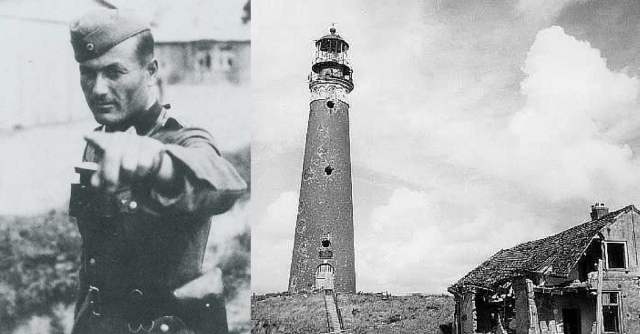Texel, a small West Friesian Island off the coast of the Netherlands, was occupied by the Nazis during World War Two, but didn’t see action until after the very end of the war.
The island is part of the Netherlands and Nazi soldiers were stationed on the island throughout the war. Little conflict came to the island and the soldiers even wrote home to their families in Germany telling them of their quiet life on the idyllic island, which had sandy beaches and fields of farming land and grazing animals.
There were around 1200 German soldiers based on the island and most thought that they would survive the war without having to fire a single bullet. However for the last six weeks of the war the island became the last European battle.
Around two thirds of the occupying soldiers were of Georgian origin, while the remaining third were from Germany. The Georgian soldiers had started the war as Soviet Red Army troops mounting defensive attacks on the invading Nazi army.
The Georgian soldiers were captured as prisoners of war by the Nazis, but were given an ultimatum – they could fester in the prisoner of war camps where they would be likely to die from hunger, torture and disease, or they could join the German Army and fight for the Nazis. In total around 30,000 Georgian soldiers joined the Nazis at the time.
On the island of Texel, as the end of the war was in sight, the Georgians knew their fate looked bleak, since they would be returned to the Soviet Union and be treated as traitors. So at the beginning of April 1945, the 800 Georgian soldiers took their weapons and attacked their German counterparts. The only way to tell them apart was a small Georgian patch on their uniforms.
They killed the German soldiers with bayonets and knives with only a few surviving and escaping to the mainland.
The island’s German commander, Major Klaus Breitner, escaped and organised a counter-attack once he had gathered troops from the mainland. A huge hunt for the Georgians took place with more than 130 executed on the island after they had been forced to dig their own graves, the Time reports.
The local Dutch people were caught up in the massacre and those who sheltered the Georgians were also executed. Even after Germany officially surrendered at the beginning of May 1945, the Germans still continued to kill the Georgians and islanders. Over those six weeks around 800 Germans, 550 Georgians and more than 100 local people were killed.

